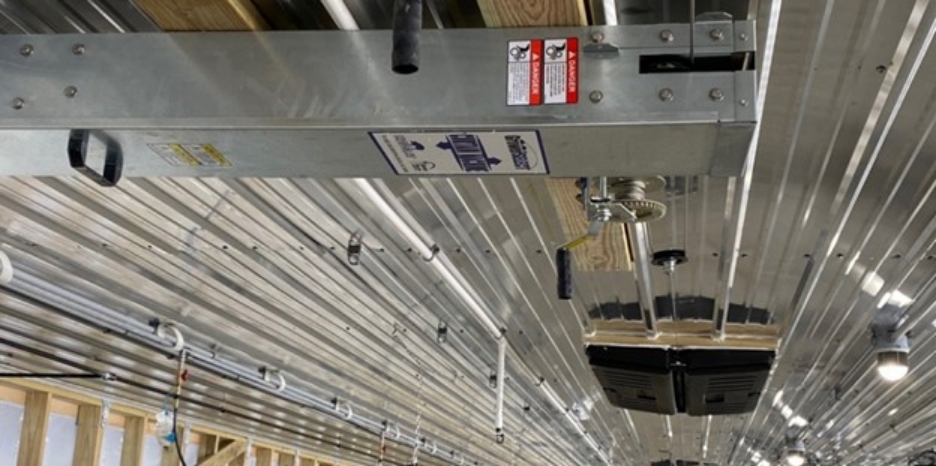October’s Pork Month spotlighted the people and practices that keep America’s pork industry moving. With colder weather ahead, now is a good time to step back, look at what worked this year, and plan a few practical upgrades for 2026. The goal is not to overhaul your barns — it is to refine the basics that improve animal comfort, reduce labor, and protect performance.
Start with proper air exchange rates and high air flow velocities through ceiling inlets.
In winter, livestock barns require the proper air exchange to remove humidity and gases to maintain air quality and moisture levels. The goal is to maintain air exchange rates at a high velocity, 800 ft/min or higher, for the cold air to mix thoroughly with the hot air, which rises, so you have even temperatures throughout the barn. Proper air movement and ceiling-level mixing support animal comfort without creating drafts.
Keep feed moving reliably
Feed consistency shows up as steadier growth and fewer interruptions.
- Inspect drive motors, chains/augers, and corner gearboxes for looseness or noisy operation.
- Check drop tubes and transitions for wear; small cracks can cause bridging or inconsistent delivery.
- Confirm feed bin lids seal tight and vents are open to prevent condensation.
When components are worn, GrowerSELECT® motors, bearings, and drive parts are drop-in replacements for many existing systems.
Heat is a system, not a single unit
Uneven temperatures are often airflow problems, not heater problems.
- Service heaters before the first long cold snap: clean burners, verify ignition, and test safeties.
- Use a handheld thermometer or temp gun to find “cold corners”; adjust inlet throw or baffles so warm air mixes evenly.
- Label gas lines, regulators, and electrical circuits to speed troubleshooting on busy mornings.
Plan small upgrades with big impact
Producers often get strong returns from a few targeted improvements:
- Inlet refurbish: new seals, linkages, and cables improve winter performance immediately.
- Fan refresh: Replacing bearings, belts, and shutters restores airflow and cuts electrical draw.
- Concrete protection: Coatings in high-traffic areas can shorten wash-down time and help sanitation between groups.
Make it easy to respond when something changes
Power events and equipment failures rarely happen at convenient times.
- Test alarms and verify contact lists.
- Exercise backup generators under load and post a simple start-up procedure near the panel.
- Keep a small winter kit on hand: igniters, fuses, thermostats, fan belts, bearings, spare cables, and basic electrical connectors.
Final thought
Continuous improvement doesn’t require a major rebuild. Tightening ventilation control, refreshing a few wear parts, and staging spares can prevent most winter surprises and protect performance heading into 2026.
2026 Hog Slat | Georgia Poultry Catalog – Available January 1, 2026
Request a catalog or sign up for our enewsletter at: hogslat.com/information-catalog-email-contact-request












 Україна
Україна Méjico
Méjico



